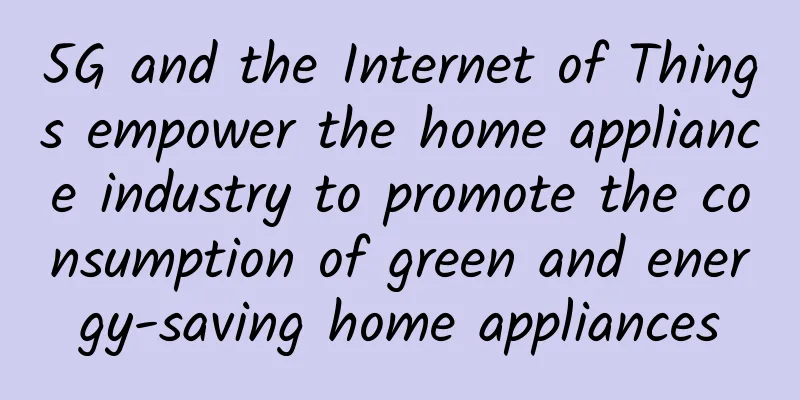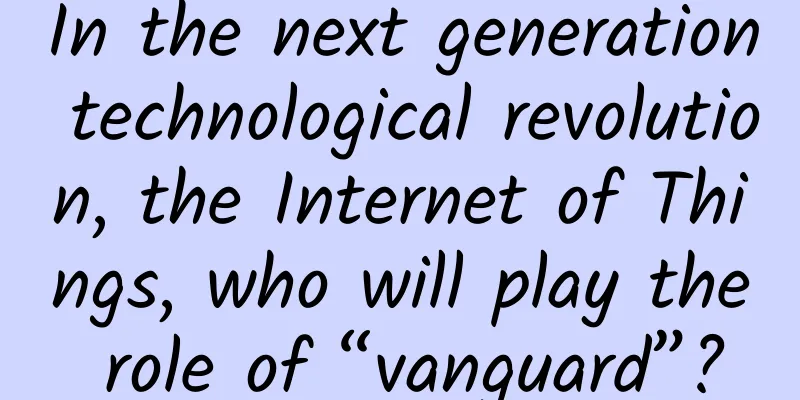5G and the Internet of Things empower the home appliance industry to promote the consumption of green and energy-saving home appliances

|
The great progress of social productivity has given people the opportunity to enjoy a wide variety of daily necessities. From clothing, shoes and hats, oil, salt, sauce and vinegar, to sofas, air conditioners, toys and cars, the huge number and variety of goods provide people with a wide range of choices to create a warm and comfortable home environment. Home appliances such as air conditioners, color TVs, refrigerators, washing machines, etc. have also become popular products purchased by every household.
With the development of the times, the popular single products in the market always bear a profound mark of the times. From the changes in the three major appliances, we may be able to have a deeper understanding of the trend of product iteration and the change of people's consumption habits. From refrigerators, color TVs, and washing machines in the 1980s to air conditioners, computers, and video recorders in the 1990s, and then to housing, cars, and smart phones in the 21st century, the performance of products has been continuously improved, and the safety and sense of technology have been increasingly strengthened. Since entering the new era, smart home has emerged as a new force in the entire home appliance market, and has become a key area for the layout of established home appliance manufacturers and industry giants. In an environment where environmental protection supervision has become stricter and consumers' requirements for intelligent products have greatly increased, the home appliance industry has also moved from the initial stage of relying on low-price competition to a critical period of focusing on quality. In order to attract consumers' attention and further stimulate their consumption interest, some home appliance manufacturers have also regarded safety, greenness, intelligence, and energy saving as the main directions of product research and development. Under the impact of cutting-edge technology, the home appliance industry has to speed up its pace of adjustment and advancement in order to complete its transformation with the help of cutting-edge technology. The hot application of 5G and the Internet of Things in various fields is injecting energy into the transformation and upgrading of many traditional industries. With the help of 5G with low latency, high stability and massive connections, the network management of data information such as manufacturing, storage, transportation and sales of home appliances will become more timely and efficient. At the same time, users will be able to play videos on smart TVs more smoothly and naturally in a 5G network environment. The application of the Internet of Things provides a favorable guarantee for the unified management and control of smart home appliances such as smart air conditioners, smart TVs, smart thermostats, and smart rice cookers. Based on the Internet of Things management system, home appliances are no longer isolated from each other, but can be linked and controlled. For example, with the help of smart voice assistants, users can not only listen to music with smart speakers, but also check the weather, flights and other information of the day. If the volume is too loud, the noise warning device in the home will issue a reminder, so as to ensure that users do not affect others while enjoying normal entertainment. As two technologies with the greatest impact on the development of the home appliance industry, 5G and the Internet of Things are undoubtedly diverse and rich in application value. The integrated application of technologies such as AR, VR, big data, and cloud computing with 5G and the Internet of Things is also bringing many new possibilities for the iteration and upgrading of home appliance products, the establishment of a home appliance resource sharing platform, the improvement of a unified home appliance management and control system, and the digital transformation of home appliance companies. Looking back on the development of the entire home appliance industry, we can find that consumers' focus on home appliances has shifted from simple usability and practicality to intelligence and safety. The country has also given clear policy support to home appliance consumption. As early as the beginning of 2019, ten national ministries and commissions jointly issued a document to promote home appliance consumption. In August 2019, the General Office of the State Council issued 20 policies to promote consumption and support the replacement of old green and smart products with new ones. At the online press conference held by the Ministry of Commerce on March 2, 2020, the Deputy Director of the Market Operation and Consumption Promotion Department of the Ministry of Commerce stated that in terms of expanding commodity consumption, it will support and guide local governments to formulate reward and subsidy policies to promote the consumption of green energy-saving home appliances, furniture and other products. At the same time, it will guide qualified regions and enterprises to launch various consumer coupons, shopping coupons and discount vouchers for specific groups, specific commodities and specific fields on the premise of complying with relevant laws and regulations and being fair and open, so as to promote the recovery of popularity and consumption. Green, energy-saving, and safe are the main concerns of consumers for home appliances. After all, home appliances are manufactured to be used by people. Users' feelings and needs should be factors that manufacturers must consider when developing new home appliances. Accelerating technological innovation and improving product performance will be an important foundation for home appliance manufacturers to gain a foothold in the market in the future. Perhaps in 2020, we will see more high-quality products in the home appliance market. |
<<: Σco Time | How to use "light" to promote the digital transformation of factories
>>: 5 Service Level Agreement Best Practices for a Unified Communications Strategy
Recommend
How to help enterprises improve the WiFi performance of wireless LAN?
Assuming your company has no money for a wireless...
Ministry of Industry and Information Technology: Local governments should work harder on 5G applications
"Although various regions are now making gre...
[Understand Routing in Seconds] Now that we have an IP address, is a MAC address still necessary?
I wonder if you are confused: Why do we need a MA...
Ten major trends in the future of industrial Internet
In recent years, major countries around the world...
The data is not real-time enough: try long connection?
background In certain scenarios, we often need to...
To promote industrial upgrading, Ascend Academy Technology Open Day came to Shenzhen
On August 11, 2020, the DevRun Developer Salon As...
The United States announced the development of a quantum internet, claiming it can never be hijacked
[[334868]] Image: Chicago Mayor Lori Lightfoot an...
Traefik Enterprise Practice: TraefikService
Introduction The routing rules of traefik can imp...
RAKsmart server flash sale starts from $30/month, cluster server starts from $142/month, US/Japan/Korea/Hong Kong data centers
In addition to the flash sales on VPS and cloud s...
For the first time in 21 years! SpaceX acquires satellite communications startup
On August 9, according to foreign media reports, ...
Six advantages of single-pair Ethernet technology
As Single Pair Ethernet (SPE) gains more and more...
What is in the Http Header?
The author has developed a simple, stable, and sc...
Three steps to improve data center efficiency
Recently, Maggie Shillington, a cloud computing a...
Dell'Oro's view: The next step in 5G technology development is to demand capacity from the 6 GHz band
In a recent blog post, Stefan Pongratz, vice pres...
Samsung bets on European 5G orders to grow network equipment business
Samsung Electronics is pinning its hopes on Europ...









